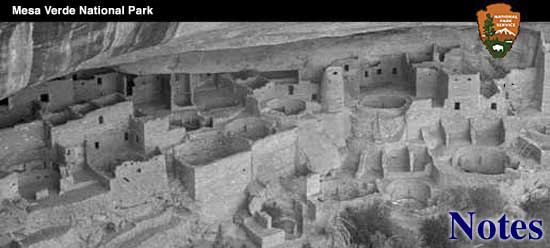

|
By translating the story told by tree rings, we have pushed back the history of the New World for nearly eight hundred years before Columbus reached its shores. The chronology for that period is more accurate than any based on written records made by human hands. Doctor A. E. Douglass, Director of Steward Observatory, University of Arizona, as an astronomer was primarily interested in sun-spots. As an aid to his investigations, he studied trees, since solar changes affect weather, and weather in turn affects the trees of the arid Southwest. Trees add a new layer of wood over their entire living surface of trunk and branches each year. The dependance of trees on rainfall, and especially on winter precipitation, is reflected in an outstanding manner by the variation in growth during wet and dry years. The large rings resulting from wet years and the small rings resulting from the dry years form a rather definite pattern extending into the past. Living trees could carry the pattern back but a few centuries at most. It was found that the tree-ring chronology could be extended by arranging ancient beams in their proper sequence so that the inner rings of each one matched the outer rings of its predecessor. Pprehistoric beams, chopped down with stone axes, were available for study in the ruins of Colorado, Utah, New Mexico and Arizona. Unfortunately, the latest entries of the prehistoric series failed to overlap and match the earliest entries of the historic series. A charred beam from the ruin at Showlow, Arizona, proved to be the "Rosetta Stone" of Southwestern Archaeology, which bridged the gap.1 Beams recently dated, now extend the chronology back to 643 A.D.
The tree ring pattern is represented graphically by a master plot. Beams from undated ruins are plotted similarly and the plots compared with the master plot to secure the cutting years, that is the years represented by the outer rings of the beams. This graphic method is merely a means to an end, for the final dating rests with the actual comparison of the beams to be dated with the type specimens already dated. Douglas Fir, Pine, and Pinon lend themselves rather readily to the interpretations of tree rings, while Juniper and Cottonwood have annual rings that are indistinct and so of little value. In order to study the annual rings, samples of beams are taken in the form of cross-sections, V-cuts, and borings an inch in diameter. Magnifying lenses aid the eyes in this close work. From available beams, Doctor Douglass has established dates for the major ruins of the Southwest, including ruins in Mesa Verde National Park. On the assumption that the year of cutting was the year of actual use in construction, the following dates were established from selected beams in these major cliff ruins:
The tree-ring chronology shows that a great drought commenced in 1276 A.D. and extended for a 23 year period to 1299 A.D. It may logically be presumed that the prehistoric population of the Mesa Verde was forced to withdraw gradually from this area and establish itself near more favorable sources of water supply. | ||||||||||||||||||
| <<< Previous | > Cover < | Next >>> |
vol3-2f.htm
14-Oct-2011